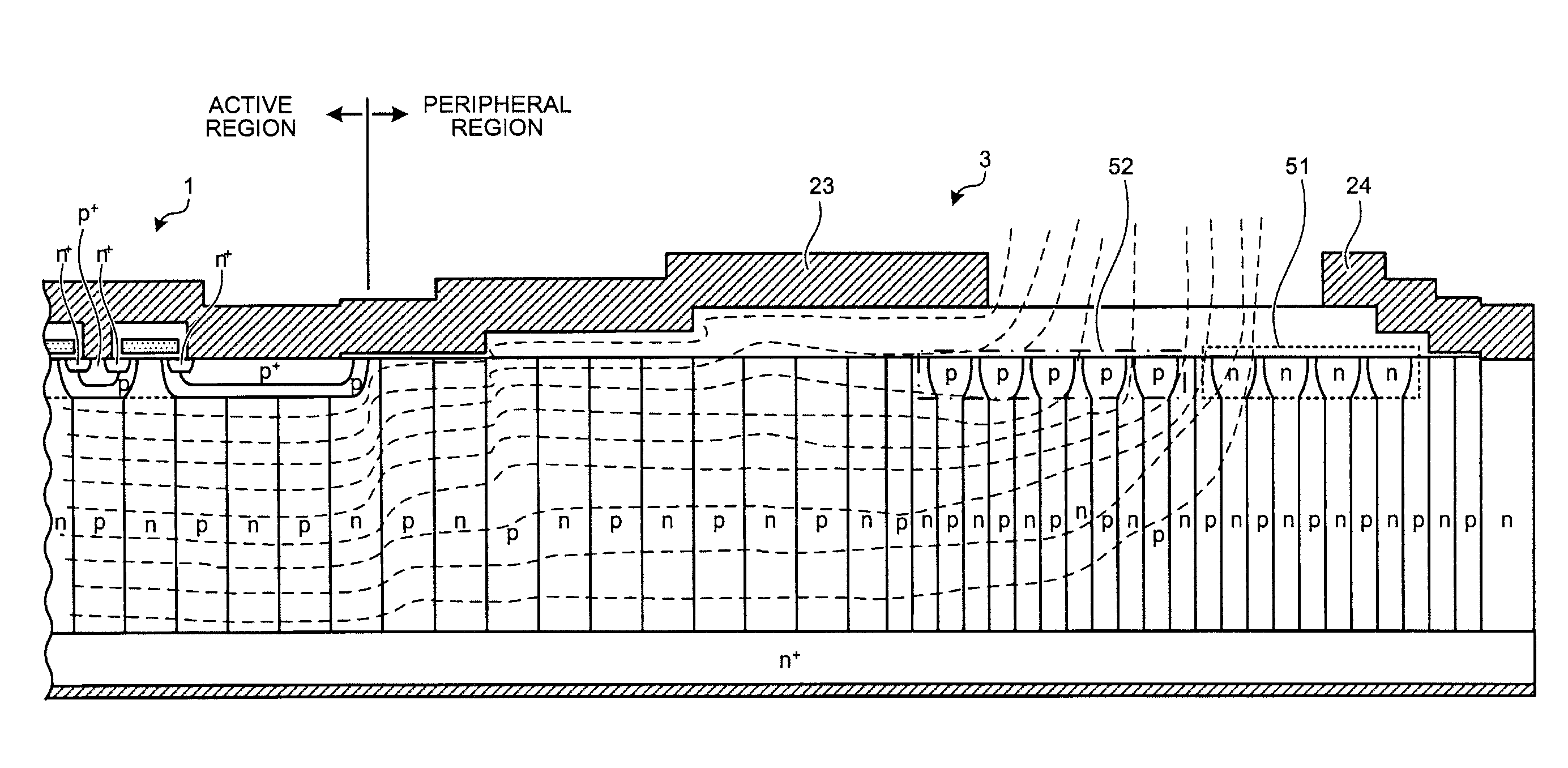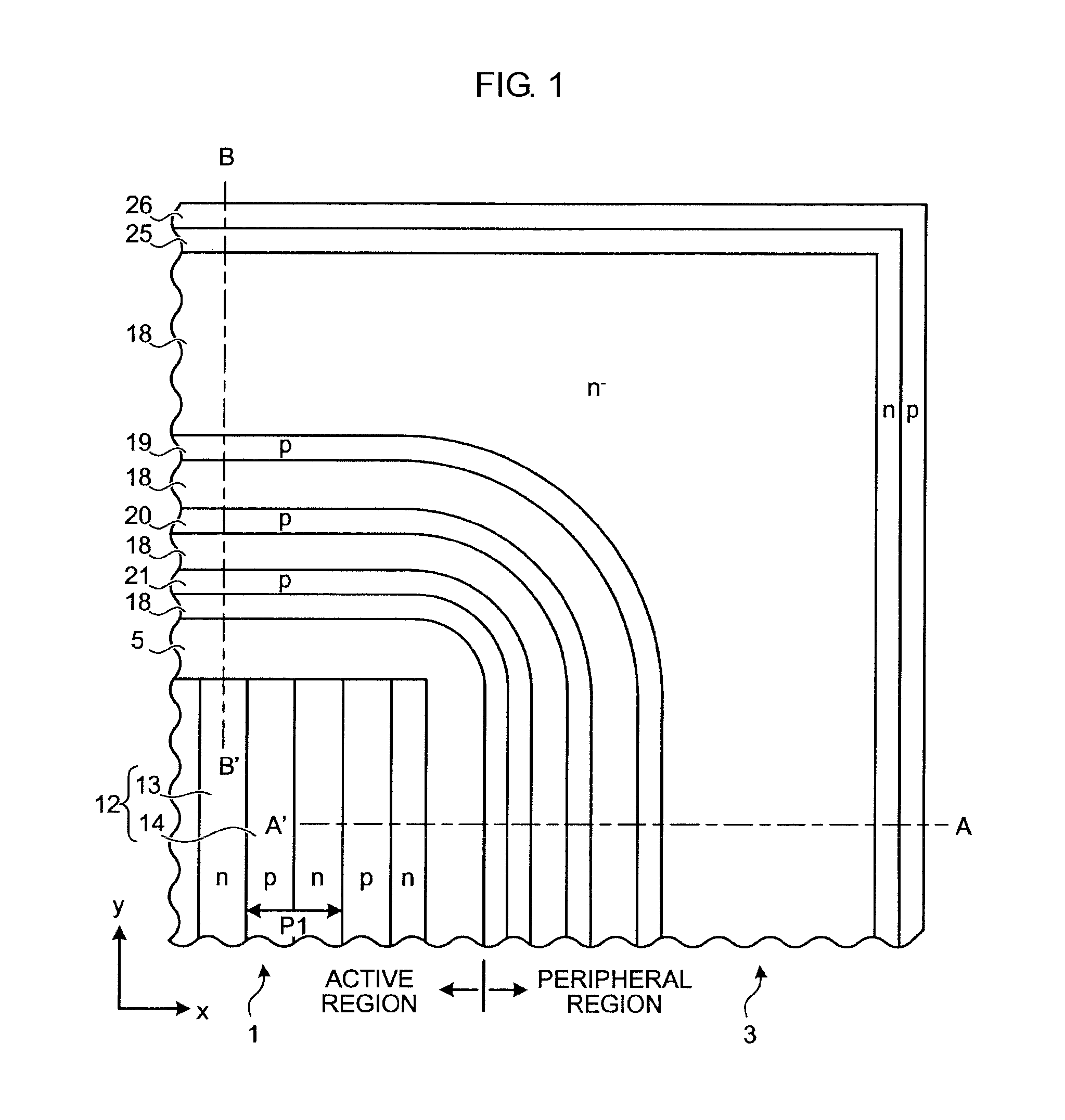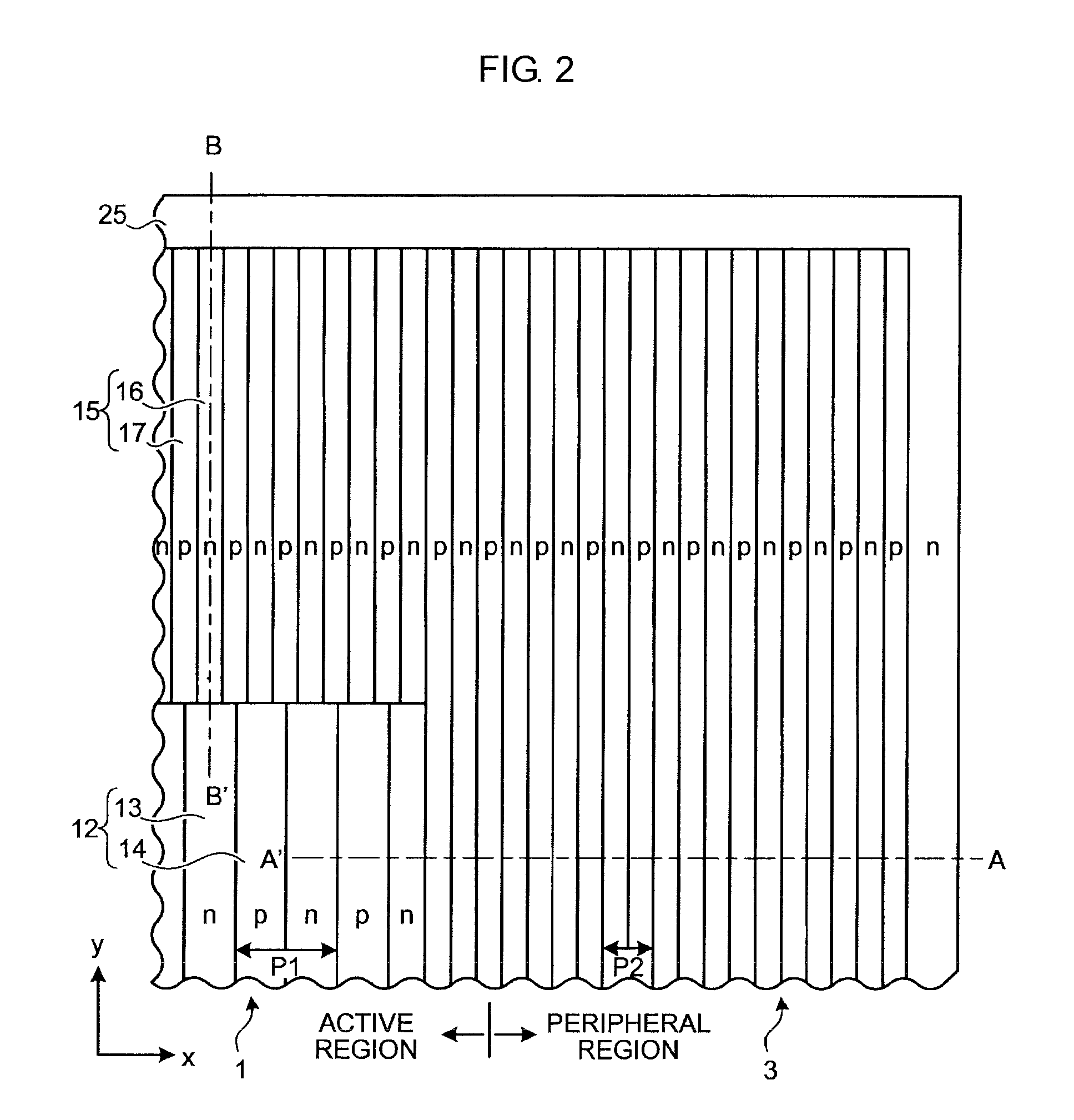Semiconductor apparatus
a technology of semiconductor and apparatus, which is applied in the direction of semiconductor devices, electrical apparatus, basic electric elements, etc., can solve the problems of increasing on-resistance, increasing breakdown voltage, and inviting greater loss, so as to improve breakdown voltage, ease the intensity of surface electric field, and improve the effect of breakdown voltag
- Summary
- Abstract
- Description
- Claims
- Application Information
AI Technical Summary
Benefits of technology
Problems solved by technology
Method used
Image
Examples
first embodiment
[0145]FIG. 1 is a top view of a semiconductor apparatus of a first embodiment. FIG. 2 is a horizontal sectional view of the semiconductor apparatus of the first embodiment. FIG. 3 is a vertical sectional view along an A-A′ line in FIG. 1 of the semiconductor apparatus of the first embodiment. FIG. 4 is a vertical sectional view along a B-B′ line in FIG. 1 of the semiconductor apparatus of the first embodiment. FIGS. 1 and 2 depict one-fourth of the semiconductor apparatus (FIGS. 5, 6, 13, 14, 27, 34, 37, 38, and 43 to 53 depict the same). FIG. 1 depicts the respective shapes of a parallel pn-layer, an n-channel stopper region, a p-base region at the outermost location of the active region, and p-guard ring regions at a first main surface (FIGS. 5 and 13 depict the same). FIG. 2 depicts shapes along a section that crosses the parallel pn-layer at both active region and peripheral region, for example, shapes along a section at a depth half of the parallel pn-layer of the active region...
second embodiment
[0152]FIG. 5 is a top view of a semiconductor apparatus of a second embodiment. FIG. 6 is a horizontal sectional view of the semiconductor apparatus of the second embodiment. FIG. 7 is a vertical sectional view along an A-A′ line in FIG. 5 of the semiconductor apparatus of the first embodiment. FIG. 8 is a vertical sectional view along a B-B′ line in FIG. 5 of the semiconductor apparatus of the second embodiment. As depicted in FIGS. 5 to 8, the second embodiment is different from the first embodiment in the following two respects. One respect is that the pitch transition of the parallel pn-layers, i.e., the boundary between the first parallel pn-layer 12 and the second parallel pn-layer 15 is under the n−-surface region 18. The other respect is that the p-guard ring regions 19, 20, and 21 are connected electrically to field plate electrodes 23, 27, and 28, respectively. The field plate electrodes 23, 27, and 28 are formed to extend over each of the p-guard ring regions 19, 20, and ...
third embodiment
[0156]FIG. 13 is a top view of a semiconductor apparatus according to a third embodiment. FIG. 14 is a horizontal sectional view of the semiconductor apparatus according to the third embodiment. FIG. 15 is a vertical sectional view along an A-A′ line in FIG. 13 of the semiconductor apparatus according to the third embodiment. FIG. 16 is a vertical sectional view along a B-B′ line in FIG. 13 of the semiconductor apparatus according to the third embodiment. As depicted in FIGS. 13 to 16, the third embodiment is different from the second embodiment in that the direction of the stripes of the second parallel pn-layer 15 is different from the direction of the stripes of the first parallel pn-layer 12. For example, the direction of the stripes of the second parallel pn-layer 15 may be perpendicular to the direction of the stripes of the first parallel pn-layer 12. In other configurative aspects, the third embodiment is substantially identical to the second embodiment.
[0157]The third embod...
PUM
 Login to View More
Login to View More Abstract
Description
Claims
Application Information
 Login to View More
Login to View More - R&D
- Intellectual Property
- Life Sciences
- Materials
- Tech Scout
- Unparalleled Data Quality
- Higher Quality Content
- 60% Fewer Hallucinations
Browse by: Latest US Patents, China's latest patents, Technical Efficacy Thesaurus, Application Domain, Technology Topic, Popular Technical Reports.
© 2025 PatSnap. All rights reserved.Legal|Privacy policy|Modern Slavery Act Transparency Statement|Sitemap|About US| Contact US: help@patsnap.com



